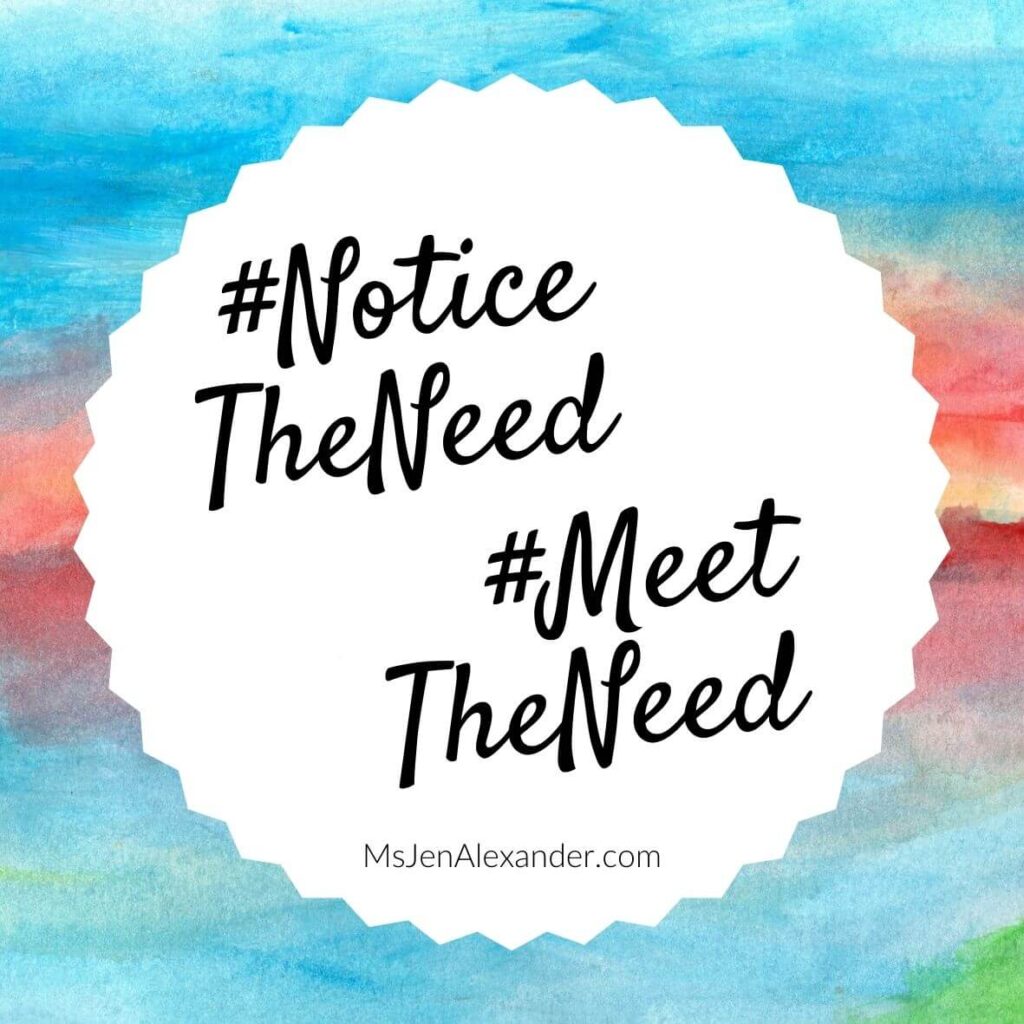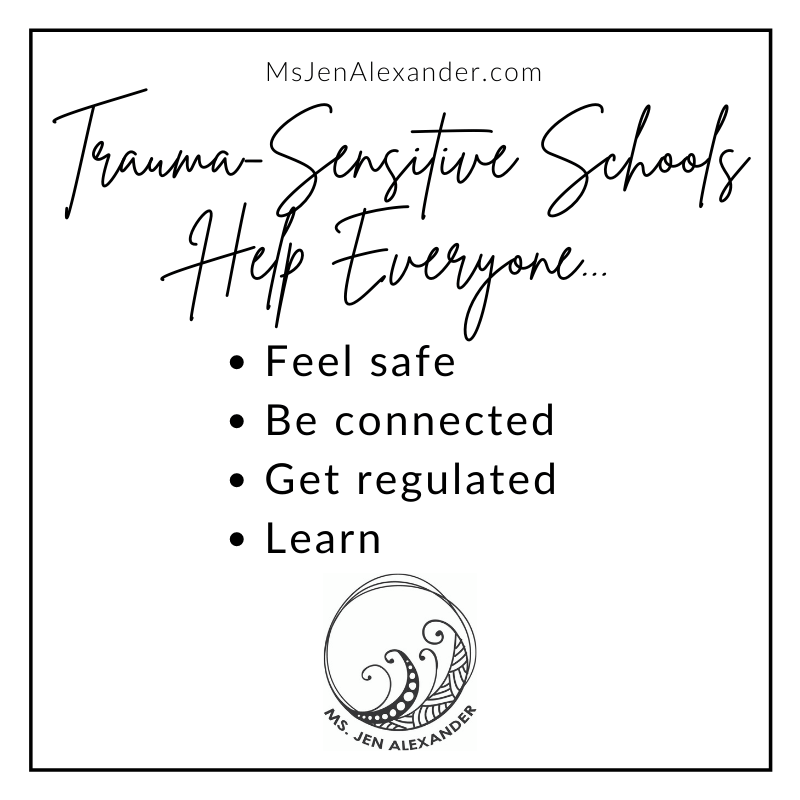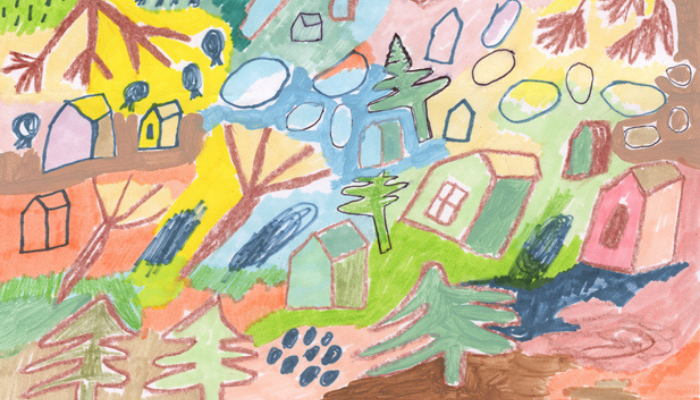Play therapy is a powerful approach to working with children, including those who have experienced trauma. As a school-based registered play therapist, I’ve used play therapy in my work with both children and adolescents. What is play therapy, and how does it benefit youth? Also, what is trauma-informed play therapy? And, how might licensed professionals in school settings begin to utilize attunement as part of trauma-informed play therapy to support students? Keep reading to learn beginning answers to these questions.
Play Therapy
Play therapy is an approach to counseling in which clinicians invite youth to use art materials, toys, games, and books to learn more about themselves, others, and the world. It promotes healing and growth. All in all, there are various theories of play therapy, ranging from completely non-directive to directive approaches. This means that some play therapists don’t guide children much at all in the playroom while others guide a lot. There are professionals who do a combination of following and guiding, which is my approach.
Overall, play therapy helps professionals build a relationship with a child, family, or group. It encourages a client’s self-expression, fosters support, encourages a child to explore views of self/others/the world, and helps them learn or practice skills. Licensed clinicians such as counselors, social workers, psychologists, or medical professionals, can use play therapy techniques for both assessment and intervention purposes in various settings, including schools.
Importantly, professionals should obtain training in play therapy techniques before using them. The Association for Play Therapy provides a wealth of knowledge, training, and support for play therapists across the globe, including practitioner registration. Learn more at http://www.a4pt.org/. Also, seek out training from leaders in the field like Dr. Terry Kottman, who invented Adlerian play therapy. Much of the basic play therapy information below originated from my training and supervision with Dr. Terry Kottman at the Encouragement Zone in Cedar Falls, Iowa. You’ll find information related to my expertise and experience in trauma-informed practices as well.
Benefits of Play Therapy
There are many recognized and researched benefits of play therapy. Here are ten of them.
- Play is children’s natural mode of connection, communication, and regulation.
- Through play, kids can express their thoughts and feelings without having to rely on verbalization, which may be harder for them developmentally (or due to trauma).
- Play therapy meets the child where they are, encouraging their agency and control.
- Many children who need counseling are going through hard things; play can be fun.
- The techniques allow for directive and non-directive approaches.
- It helps clients express outside of themselves what is going on inside.
- Play therapy is often less threatening than traditional talk therapy because youth can share how a character (e.g., puppet) feels within a metaphor without having to communicate directly about themselves.
- Play naturally helps clients integrate their experiences as part of their life story.
- It can benefit children, preteens, teens, and even adults.
- It is appropriate for the mental health and school settings (with appropriate training).
Trauma-Informed Play Therapy
Now that you better understand what play therapy is, let’s focus on trauma-informed play therapy. Overall, trauma-informed play therapy is play therapy facilitated by clinicians who understand the effects of trauma and are trained in helping youth recover from trauma. In short, trauma-informed play therapy requires an understanding of trauma and its effects, play therapy skills that utilize trauma-informed interventions, and importantly, expertise in attunement.

All children and adolescents benefit from attunement in their relationships with primary caregivers, educators, and mental health professionals, whereby adults #NoticeTheNeed and help #MeetTheNeed with youth in responsive ways. Attunement, however, is especially critical for people who have experienced trauma because too much stress for too long can change the way individuals respond to stress in their bodies. This may cause ongoing patterns of dysregulation, which can result in feeling overwhelmed or shut down. While adaptive during trauma, these patterns can become maladaptive in other non-threatening situations. At the very least, they drain the body’s energy system when relied upon longterm. This can negatively impact health and learning. As such, it’s necessary for mental health professionals to not only understand attunement, including its effects on interpersonal neurobiology and child development but also, be skilled at demonstrating attunement during trauma-informed play therapy.
Attunement in Trauma-Informed Play Therapy
To demonstrate attunement, start by observing a student or client closely as you interact together. Then, do your best to #NoticeTheNeed and #MeetTheNeed in right now moments. Questions like, “What do you feel? What do you need? How might I be able to help?” are especially critical.
To go deeper, remember the essentials of trauma-sensitivity, meaning safety, connection, regulation, and learning. Ask yourself if the child or teen is feeling safe. If safe, are they experiencing a connection marked by acceptance with you? Finally, are they regulated enough to process their emotions, learn about new perspectives, or practice skills within the session? If not, help them feel safe, be connected with you, and get regulated first.

This process helps clients feel well and be ready for learning. Most importantly, it gives youth the experience of being seen, acknowledged, kept safe, and soothed in relationship with you. This absolutely is the foundation of trauma-informed care because it fosters connection and security. As such, attunement matters more than any agenda, hope, or plan you might have for any play therapy session. With attunement, learning and growth are possible. Without it, much can be lost in terms of the client’s wellbeing and your relationship with them too. Additionally, as is the case with much of what is done in trauma-informed care, an attuned approach is not only best for traumatized individuals though. It’s good for everyone else as well.
Embrace the Mess
Although I described attunement as a step-by-step process, it’s really not like that. It’s quite messy instead. Once you move into the content of the session (if the client becomes ready for that), it’s a back-and-forth dance. Sometimes, it’s confusing. One must constantly monitor how the client is doing—all while gently moving toward content, away from it, and back toward it again as safety, connection, and regulation shift and change. Always focus on the person and process within your relationship first. Although important, content is secondary.
Overall, attunement comes from establishing as well as maintaining a safe, regulated rhythm—together with the other person. Not sure where to start? First, slow down, check inside yourself frequently, and use gentle words, caring eye contact when culturally appropriate, soft movements, and even safe touch (with permission). Also, create a physical environment that is safe, inviting, and comforting. At the same time, check-in with yourself regularly, notice when you start to become dysregulated, and practice regulating yourself. That way, you can be ready to help establish and re-establish safety, connection, regulation, and learning in your relationships with youth during trauma-informed work of any kind, including play therapy.
To Learn More…
- To explore the benefits of play therapy in general, visit the Association for Play Therapy’s website. Specifically, check out the video called Introducing Andrew. It gives a great short explanation regarding the power of play and play therapy.
- Read the chapter I co-authored with Dr. Terry Kottman in Counseling Theories: Practical Applications with Children and Adolescents in School Settings by Ann Vernon and Terry Kottman (2009). It highlights using Adlerian play therapy in a case study with a student in elementary school.
- If you’re a counselor, social worker, psychologist, or another supportive leader, please consider attending my 3-hour online seminar Counseling Grieving Students. Learn more on my events page. After a brief review of grief concepts, I will teach creative counseling interventions for children and adolescents who have experienced loss, including art therapy and sand tray therapy techniques. It’s okay if you don’t yet have experience with these or other play therapy techniques. I’ll teach you how to get started! Together, let’s learn and support folks in your communities through use of trauma-informed play therapy.
Play is powerful!

#BuildingTraumaSensitiveSchools #NoticeTheNeed #MeetTheNeed #FeelSafe #BeConnected #GetRegulated #Learn #Attunement #PlayTherapy
References
Kottman, T. (2014). Play therapy: Basics and beyond. Alexandria, VA: American Counseling Association.
Kottman, T. (2015). Partners in play: An Adlerian approach to play therapy (3rd ed.). Alexandria, VA: American Counseling Association.
Kottman, T. & Meany-Walen, K. (2018). Doing play therapy: From building the relationship to facilitating change. New York, NY: The Guilford Press.



